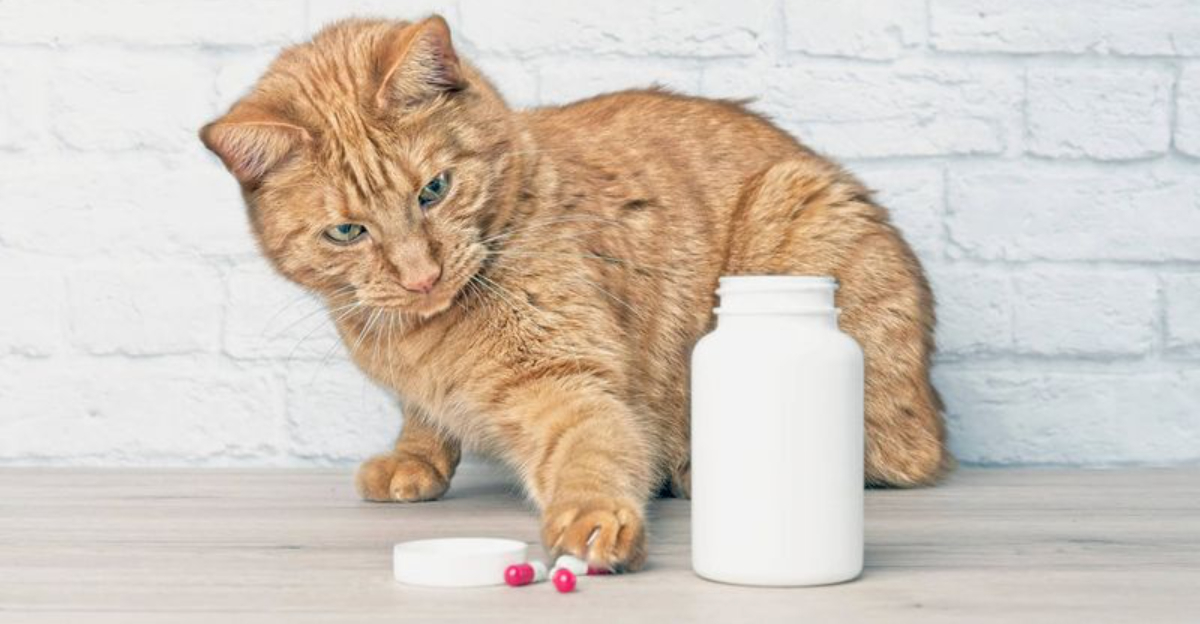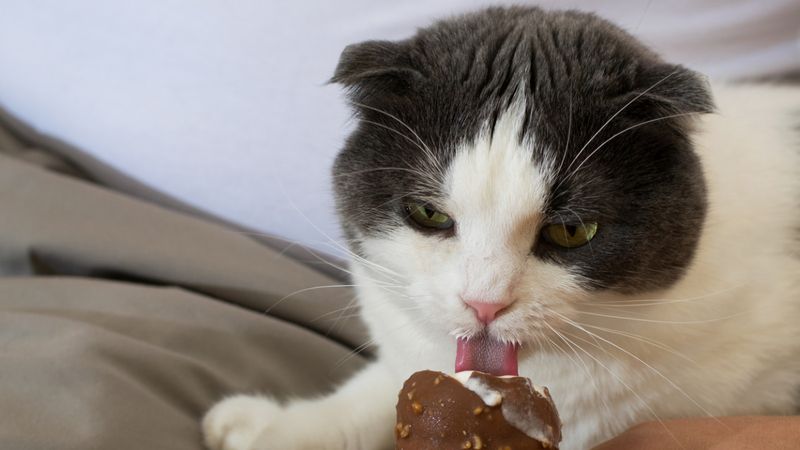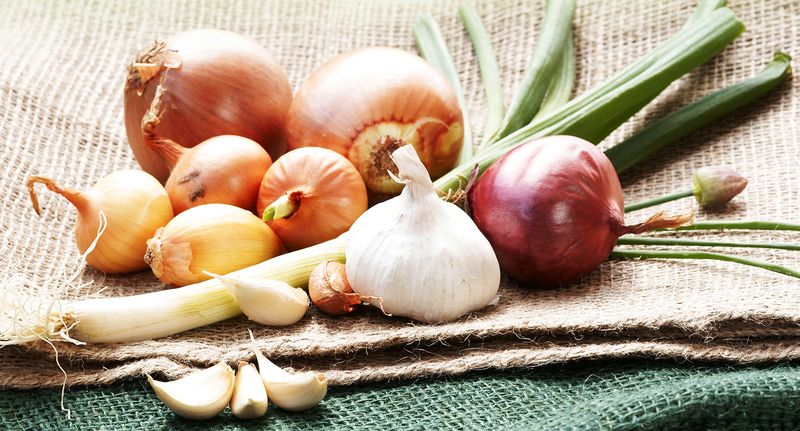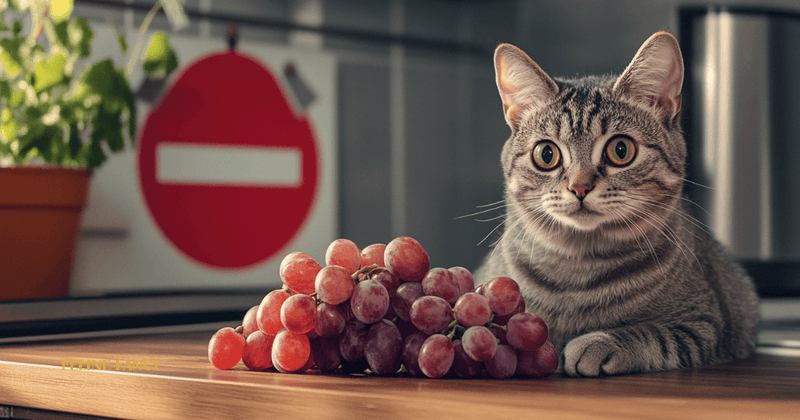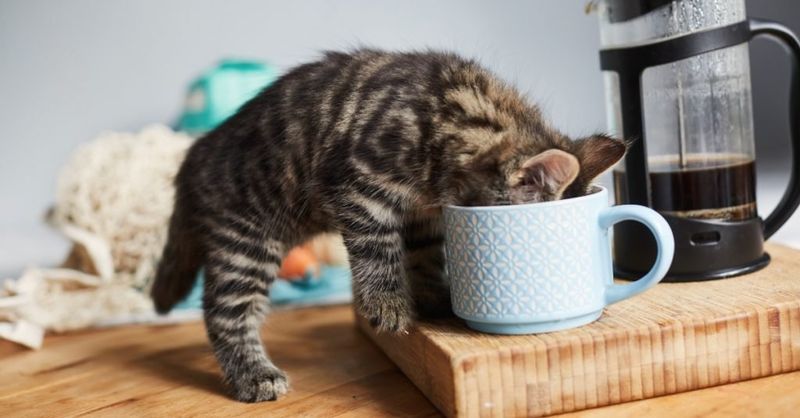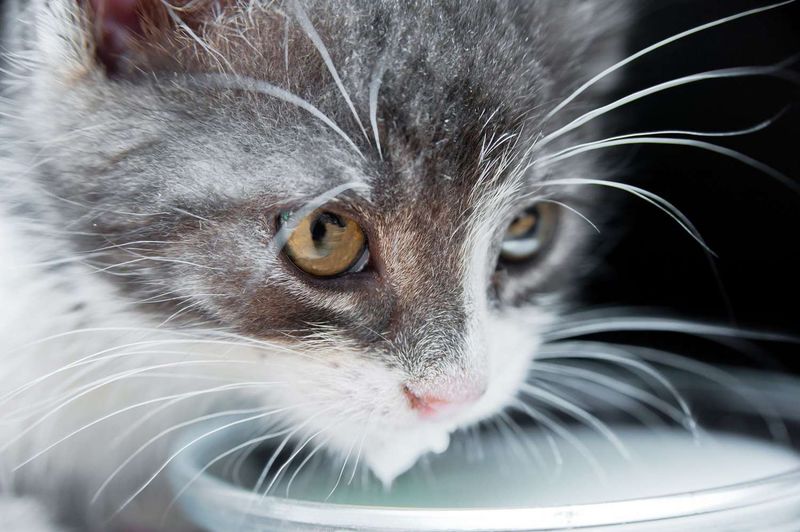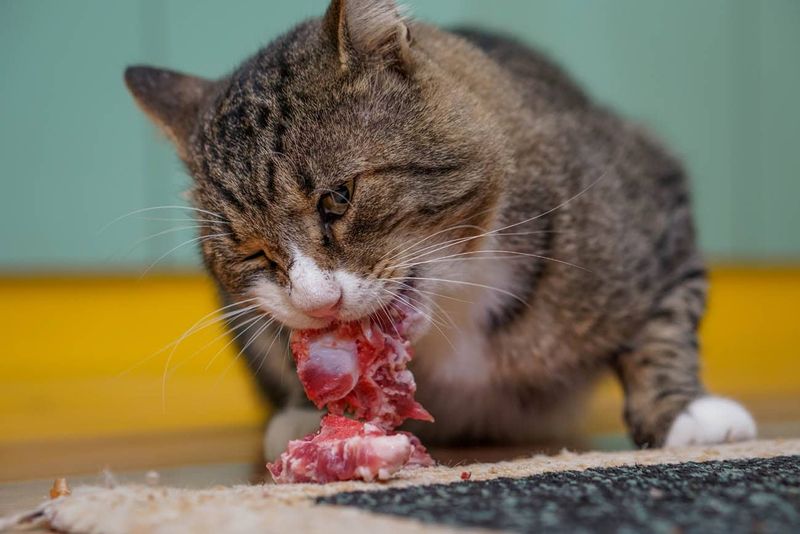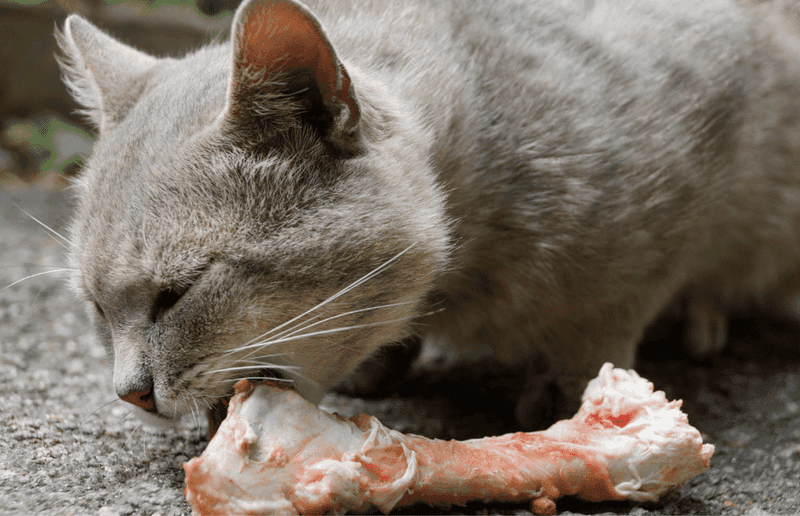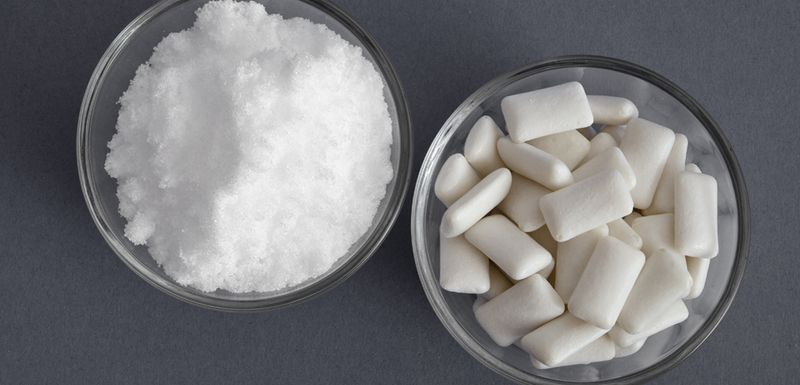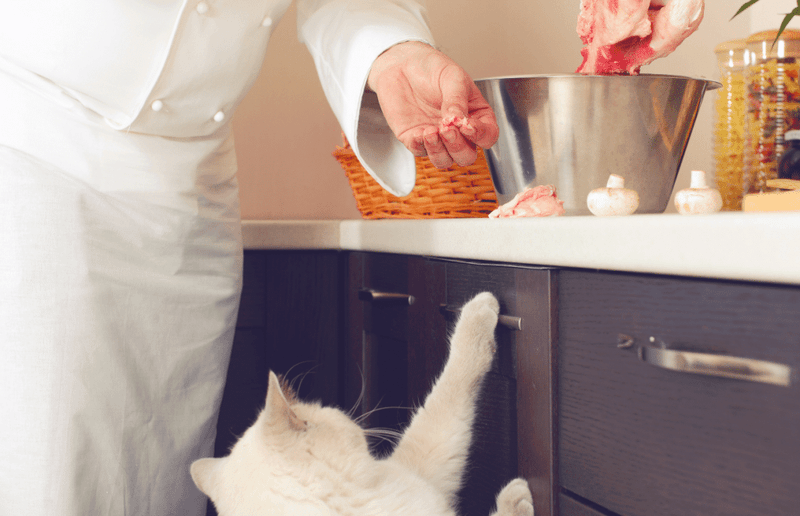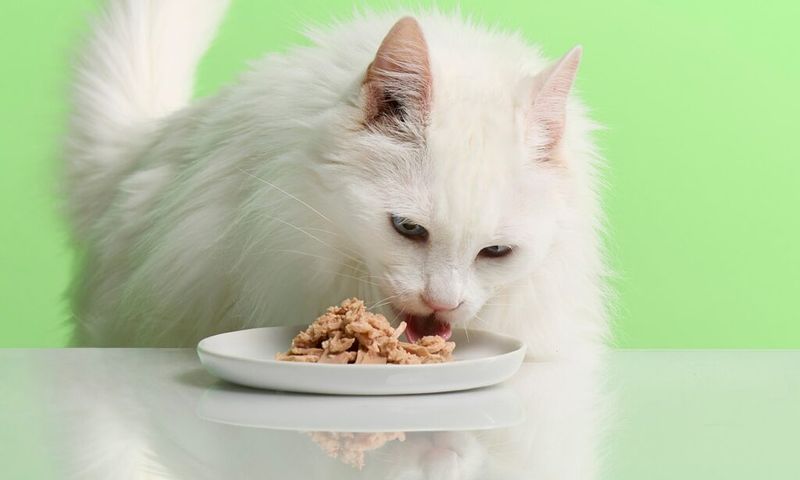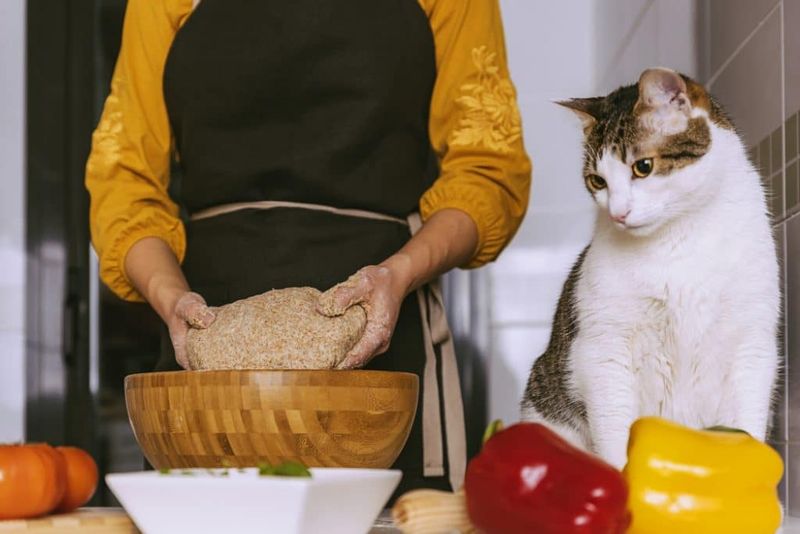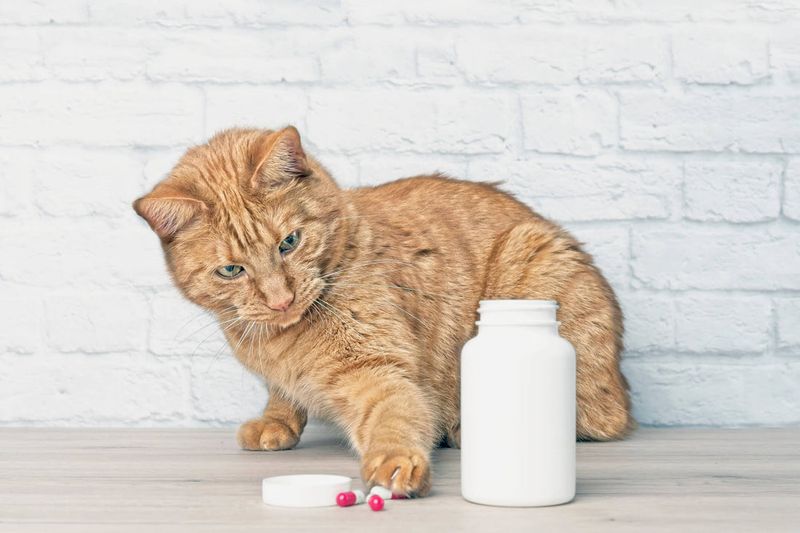📖 Table of Content:
Cats are naturally curious creatures, often intrigued by a variety of foods we humans enjoy. However, not all foods that seem harmless are actually safe for our feline friends. This article explores 12 common foods that are surprisingly dangerous for cats, providing insights into why these seemingly innocent treats should be kept out of their reach.
1. Chocolate
Most people love chocolate, but it’s no treat for cats. Chocolate contains theobromine and caffeine, which are toxic to felines. Even small amounts can cause vomiting, diarrhea, and even heart problems. Cats are less likely to eat chocolate compared to dogs, but it’s always best to keep it out of reach. Dark chocolate poses the greatest risk due to higher theobromine levels. Always secure your chocolate stash, ensuring it’s far from curious paws.
2. Onions and Garlic
Imagine your cat sneaking a bite of your tasty dinner, only for disaster to follow. Both onions and garlic can cause anemia in cats. These ingredients damage red blood cells, leading to weaknesses and breathing issues. Raw, cooked, or powdered forms are equally harmful. Some pet foods even contain garlic as a flavor enhancer, which is concerning. Check ingredient labels carefully and share this wisdom with fellow cat lovers.
3. Grapes and Raisins
While grapes and raisins are healthy snacks for humans, they spell trouble for cats. Even a small quantity can lead to kidney failure, a serious outcome that might not immediately show symptoms. Cats usually don’t find them appealing, but accidents happen. It’s essential to be vigilant and aware, ensuring these fruits are not left within reach. Educate others on this surprising danger, protecting more feline lives.
4. Caffeine
For humans, caffeine fuels our mornings, but for cats, it’s a dangerous stimulant. Found in coffee, tea, and energy drinks, caffeine can cause rapid heart rate, hyperactivity, and tremors in cats. Their systems cannot handle such stimulation. Always dispose of caffeinated products properly, keeping them inaccessible to pets. If your feline friend exhibits unusual behavior after exposure, seek immediate veterinary care.
5. Milk and Dairy Products
The image of a cat lapping up milk is iconic, yet misleading. Many cats are lactose intolerant, meaning their bodies can’t digest lactose in dairy properly. Consuming milk or dairy can lead to stomach upset, diarrhea, and discomfort. While kittens can digest their mother’s milk, adult cats should steer clear of dairy. Offering fresh water is a much safer and healthier option for hydration.
6. Raw Meat and Fish
Raw diets are trendy, but raw meat and fish pose risks to cats. They can carry harmful bacteria like Salmonella and E. coli, causing serious illness. Moreover, raw fish contains an enzyme that destroys thiamine, an essential B vitamin for cats. Thiamine deficiency can lead to neurological issues. Cooking meat and fish eliminates these dangers, ensuring your cat receives nutrients safely. Protective feeding is wise feeding.
7. Bones
Bones might seem like a natural treat for carnivorous cats, but they are dangerous. Cooked bones can splinter easily, causing choking hazards or internal injuries. Even raw bones are risky, potentially leading to dental fractures or intestinal blockages. Instead, offer dental treats designed for cats, which are safe and beneficial. Educating cat owners about these risks ensures better pet care and safety.
8. Xylitol
Sugar-free doesn’t mean safe when it comes to xylitol, a common sweetener in many products. While not as lethal to cats as it is to dogs, xylitol can still cause liver damage and hypoglycemia. Symptoms may include vomiting and coordination loss. Keep products like sugar-free gum and candy out of paw’s reach. Sharing this awareness can prevent accidental ingestion and health issues.
9. Fat Trimmings
Leftover fat trimmings might tempt your cat, but they pose a risk of pancreatitis. This painful condition results from inflammation of the pancreas, causing digestive distress. Even small amounts can trigger this reaction. It’s crucial to dispose of fat trimmings properly, preventing curious cats from sampling. Educating yourself and others about these dangers promotes healthier feeding habits for your feline companion.
10. Tuna
Cats often fancy tuna’s strong aroma, but too much can be harmful. Tuna lacks certain nutrients that cats need, like vitamin E, leading to steatitis or yellow fat disease. Additionally, mercury poisoning is a concern with regular tuna consumption. It’s fine as an occasional treat, but moderation is key. Explore balanced cat foods that provide complete nutrition without the risks of overconsumption.
11. Yeast Dough
Fresh, rising bread dough can be irresistible to a curious cat, but it’s dangerous. Ingesting yeast dough leads to expansion in the stomach, causing pain or even life-threatening blockages. Furthermore, as yeast ferments, it produces alcohol, compounding the risk of toxicity. Keeping dough out of reach during baking adventures safeguards against these potential hazards for your feline friend.
12. Human Medications
Cats are inquisitive by nature, leading them to explore human medications left in accessible places. Many medications, including painkillers and antidepressants, can be lethal to cats. They metabolize drugs differently, making them more susceptible to toxic effects. Always store medications securely, and if a pet ingests any pills, prompt veterinary attention is critical. Responsible medication storage protects pets.
